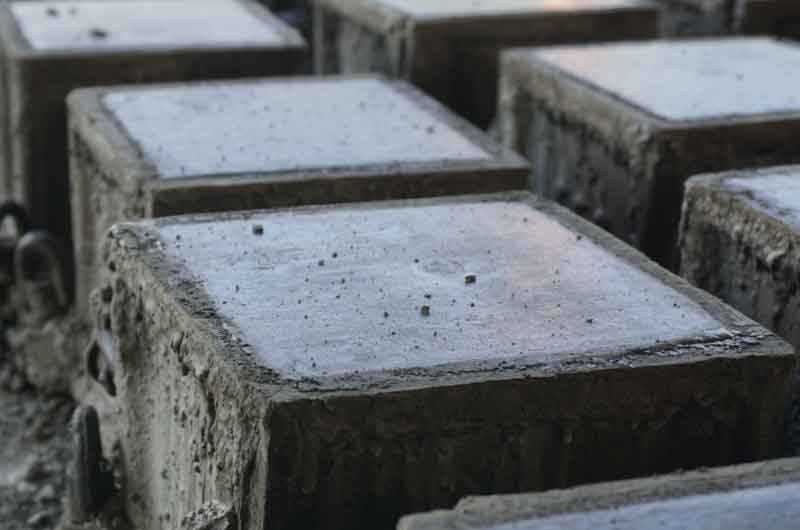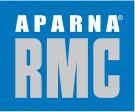How long will it take for the concrete to achieve 100% of its strength?

May 23, 2024
Concrete is a fundamental building material known for its durability and compressive strength. But have you ever wondered how long it takes for concrete to reach its full potential? Understanding the process of concrete curing and the factors affecting its strength is crucial for any construction project. This blog post dives deep into the science behind concrete’s strength development, dispels the myth of the “28-day cure,” and explores how Aparna RMC’s concrete solutions can ensure a predictable setting time for your project.
Setting vs. Hardening: Understanding the Stages of Concrete Strength Development
Many people use the terms “setting” and “hardening” interchangeably when discussing concrete. However, there’s a crucial distinction between these two stages:
Setting:
The term ‘setting’ refers to the process of concrete gradually becoming rigid due to a chemical reaction known as the ‘heat of hydration,’ which starts when water comes in contact with cement. In simple terms, setting describes the transition of concrete from a fresh, workable state to beginning to acquire rigidity or stiffness.
Setting in concrete is classified into two types: Initial setting time and Final setting time.
- Initial setting time: This is the period during which the concrete mix starts losing its plasticity. It is defined as the time elapsed from the moment water is added to the mix until the mix reaches a penetration resistance of 3.43 N/mm² in the mortar, which is sieved from the fresh concrete.
- Final setting time: This is the period during which the concrete mix turns solid. It is defined as the time elapsed from the moment water is added to the mix until the mix reaches a penetration resistance of 26.97 N/mm² in the mortar, which is sieved from the fresh concrete.
The evaluation of initial and final setting times is done using a penetrometer, as specified in IS 8142.
Hardening:
Hardening is the process by which concrete gains strength over time. As the cement hydrates (reacts chemically with water), a strong network of crystals forms within the concrete, increasing its overall compressive strength. This hardening process can continue for weeks or even months, depending on various factors.
In brief, hardening can be described as the development of measurable compressive strength in a concrete specimen.
Factors Affecting Setting Time and Hardening
Several factors influence how quickly concrete sets and hardens. Here are some key aspects to consider:
- Moisture: Concrete needs the right amount of moisture to cure properly. Too much water can lead to weak concrete with a porous structure. Conversely, insufficient water can cause the concrete to dry out too quickly, hindering the hydration process and resulting in lower compressive strength. Finding the optimal water-to-cement ratio (w/c ratio) is crucial for achieving optimal strength.
- Temperature: Warmer temperatures accelerate the setting process, while colder temperatures slow it down. This is because chemical reactions, including cement hydration, occur more rapidly at higher temperatures. In colder climates, concrete curing blankets can be used to help maintain ideal curing temperatures.
- Accelerators: Certain additives known as concrete setting accelerators can be used to speed up the setting time of concrete. These can be helpful in situations where faster turnaround is required for construction projects. However, it’s important to note that using accelerators can slightly reduce the concrete’s final compressive strength.
- Environmental Conditions: Humidity and weather conditions can also impact how quickly concrete sets and hardens. High humidity can slow down the drying process, while sudden drops in temperature can damage fresh concrete. Rain, particularly within the first few hours after pouring, can wash away cement particles and negatively affect the concrete’s strength. Proper planning and consideration of weather forecasts are essential for successful concrete curing.
Factors Affecting Concrete Strength
Once the concrete has set, several factors continue to influence how strong it becomes:
- Water-to-cement ratio (w/c ratio): This is arguably the single most critical factor affecting concrete strength. A lower w/c ratio (meaning less water relative to cement) creates denser and stronger concrete. Conversely, a higher w/c ratio leads to a more porous and weaker concrete structure. For optimal compressive strength, it’s essential to strike a balance between workability (the ease with which fresh concrete can be mixed, placed, and compacted) and the final strength requirements of the project.
- Cement aggregate ratio: The ratio of cement to aggregate (sand, gravel, etc.) also plays a role. A higher cement-to-aggregate ratio results in more cement paste to bind the aggregates, leading to increased strength. However, this can also be more expensive. Finding the optimal balance between cost and strength is essential.
- Grade of aggregate: The size and quality of the aggregate used in the concrete mix can also impact strength. Well-graded aggregate with a mix of coarse and fine particles creates a more compact structure and stronger bond with the cement paste. The size and strength of the aggregate particles themselves also influence the final compressive strength of the concrete.
- Curing conditions: Proper curing practices are essential for concrete to reach its full potential compressive strength. Curing involves maintaining a moist environment for a specific period, allowing for continued hydration and strength development. This can be achieved by covering the concrete with plastic sheets, spraying it with water at regular intervals, or using curing compounds that help retain moisture in the concrete.
Time to Reach Full Strength: Busting the 28-Day Myth
A common misconception exists regarding concrete strength – the idea that it takes exactly 28 days for concrete to reach 100% of its strength. While the 28-day mark is indeed an industry standard for measuring compressive strength (the ability of concrete to resist compression forces), it’s not a magic number for achieving full strength. Here’s why the 28-day myth doesn’t hold universally:
- Concrete strength development is not linear: it gains strength rapidly early on, but the rate slows down over time. Typically, it reaches 70-80% of its design strength within 7 days. The 28-day benchmark depends on various factors. Concrete continues to develop compressive strength even after 28 days. If the required compressive strength is not achieved during the cube specimen testing process, further investigation should be conducted using both non-destructive and destructive tests on the cast-in-situ concrete.
- Mix design is key: The specific mix design, including cement type, w/c ratio, and admixtures, significantly impacts strength development. High-performance mixes can achieve design strength much sooner than 28 days.
- Curing temperature matters: Warmer curing accelerates strength gain, while colder temperatures slow it down. Proper curing, like using insulated blankets in cold weather, is crucial.
How Aparna RMC Ensures Predictable Setting and Strength Gain
At Aparna RMC, we focus on predictable setting times and consistent strength development for your project’s success.
- Precise Mix Design: Our team helps you select the right concrete mix for your needs, considering factors like strength, workability, and cost.
- Quality Control: We maintain strict quality control throughout production for consistent performance and predictable setting times.
- Curing Recommendations: We guide proper curing practices based on your mix design and weather conditions.
By partnering with Aparna RMC, you benefit from our expertise and high-quality concrete solutions to achieve predictable setting times and ensure your project progresses smoothly.
In conclusion, understanding concrete strength development and curing is essential. The 28-day test is a valuable benchmark, but not the ultimate measure of strength. By choosing the right mix design, implementing proper curing, and partnering with a reliable supplier like Aparna RMC, you can ensure your project achieves the desired strength and durability.
Excerpt
Unsure how long concrete takes to cure? This blog explores concrete strength development, curing factors, and the truth behind the “28-day cure” myth. Learn how Aparna RMC ensures predictable setting times for your project.
